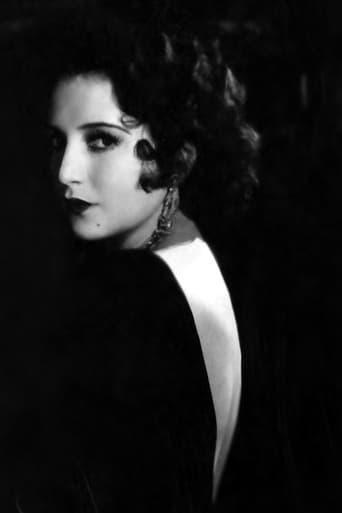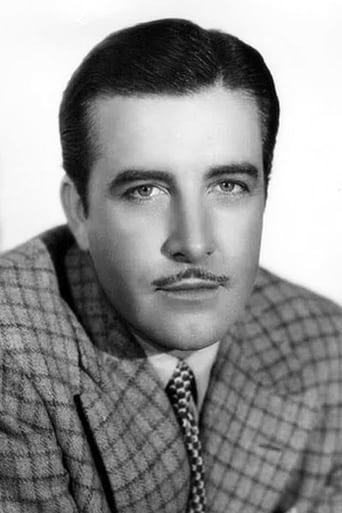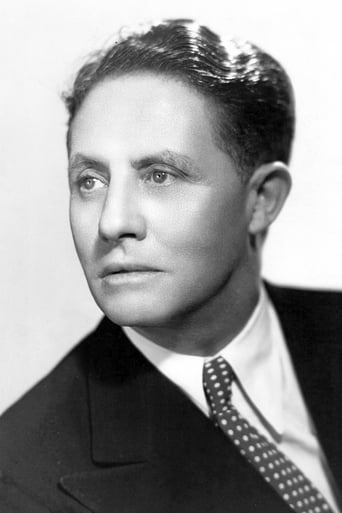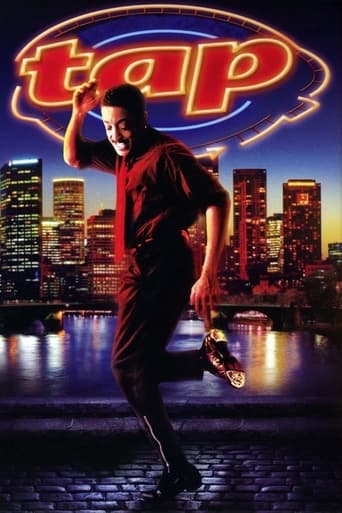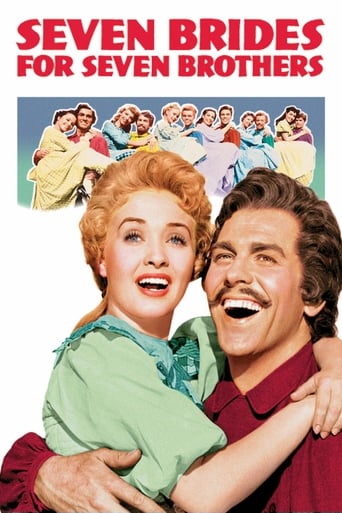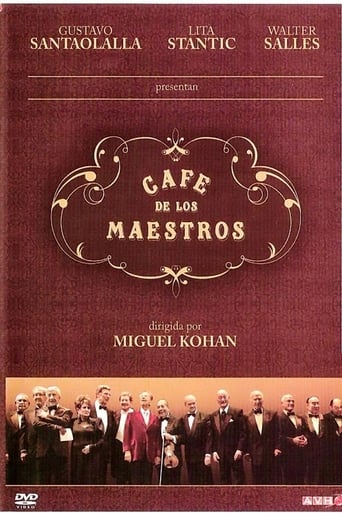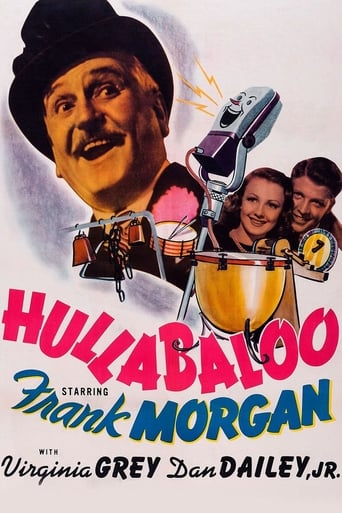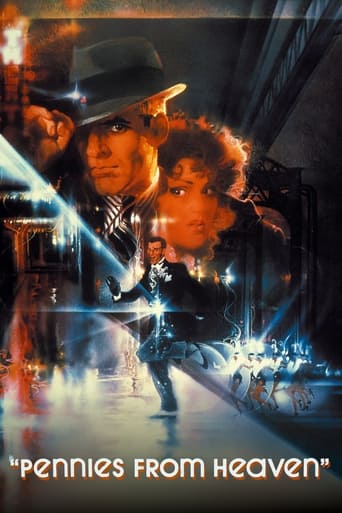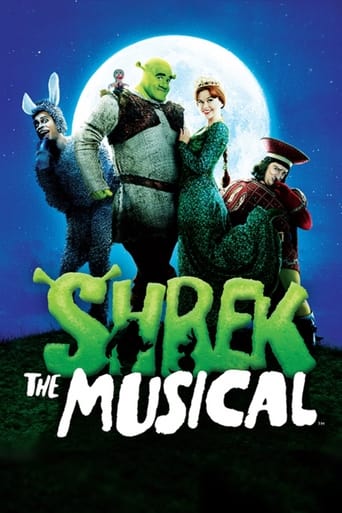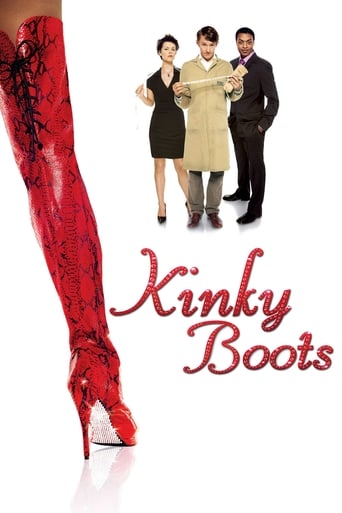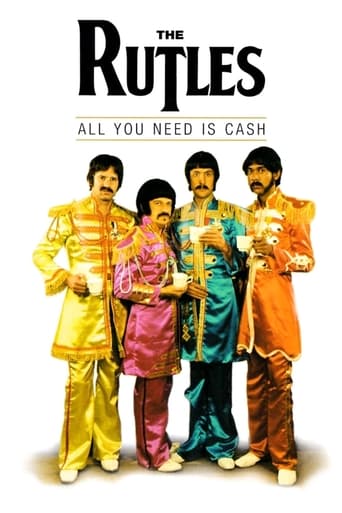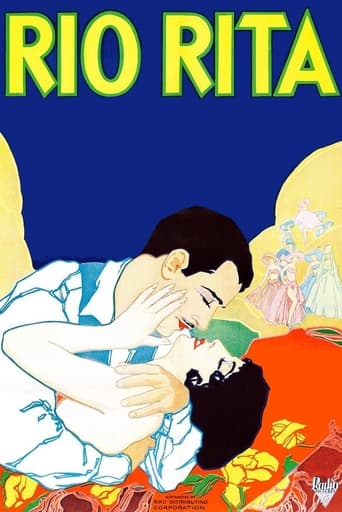
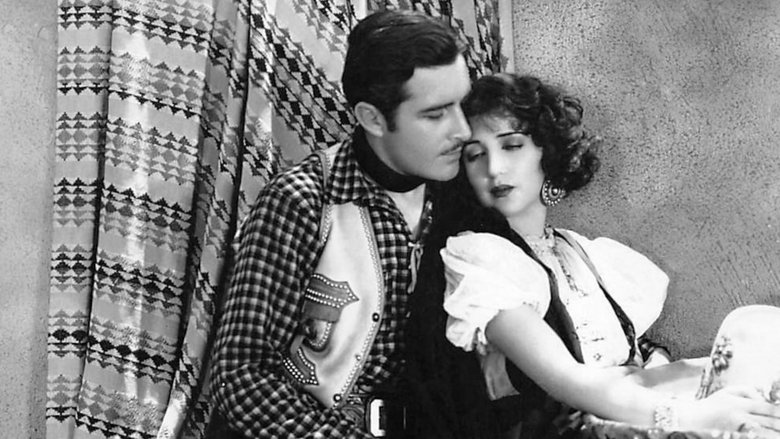
Rio Rita (1929)
Capt. James Stewart pursues the bandit "The Kinkajou" over the Mexican border and falls in love with Rita. He suspects, that her brother is the bandit.
Watch Trailer
Cast


Similar titles
Reviews
Good concept, poorly executed.
Don't listen to the negative reviews
It’s not bad or unwatchable but despite the amplitude of the spectacle, the end result is underwhelming.
The film may be flawed, but its message is not.
"Rio Rita" should be required viewing for all film studies classes--not as an example of quality, but as an exercise in identifying all the mistakes that were made in its production. In 1929, the nascent talkie industry was on a steep curve to understand and perfect the medium. They used former silent film stars. And they imported vaudeville acts, stage actors and opera stars--anyone with experience using his voice before audiences. And in this case, they imported an entire Broadway musical produced by Flo Ziegfeld. This film says as much about the sad quality of Broadway at the time as it does about Hollywood's first stumbling steps into the sound era. The good news is that the industry learned quickly and in only a few years, genuine classics were being produced in large quantities.In the meantime, some very uneven films were produced, like this one. It opens in Fremont, a small town along the Rio Grande, where cowboys in full western regalia rub elbows with men in tuxedos and flappers while watching a vaudeville-style act on a stage in the local saloon. Presumably the formally-attired swells in the audience rode their horses into town.Then the action crosses the river into Mexico, where the women who aren't dressed as flappers wear colorful fiesta wear and sombreros. Later, a scene takes place on a "pirate barge" parked on the southern side of the river. I am not making this up.I can say a couple of nice things about this pre-Code film. Some of the actors are attractive. After the criminals rob the local bank, they sing love songs in the garden of Senorita Rita's hacienda. And this film would be a rich vein for MST3000.As the singing Rangers search for the dangerous villain/bank robber known as "The Kinkajou", we can ask ourselves why a vicious bandit is named after a nocturnal arboreal mammal that eats mostly fruit? I guess "The Sloth" was already taken.We can also occupy our time enumerating the qualities of this film that leave much to be desired, like:*The sound quality. And I am not just referring to the aged quality of the sound. Dialogue competes with orchestral background music, for example.*The acting. Actors give speeches while the extras draw focus and otherwise look like planted palms around a stage.*The songs. There are some real stinkers in this collection. Consider: "Rootin' pals, tootin' pals..."*Costuming. Some of it looks amateurish. In other instances--as mentioned earlier--there are clashes of styles within the same scene.*Shaky camera work. They were still learning how to move cameras. Also, people's heads were cut off.*Bad singing. The voices are okay, but there is something wrong when a love song is delivered with the two vocalists generally ignoring each other.*Bad dancing, bad choreography. Here, I do not mean to single out this film. This was par for the course in all films of the time.*A disjointed mixing of genres. This film wants to be a musical, but it is also a western, an opera, a Ziegfeld extravaganza complete with aerial shots, a comedy including entire vaudeville acts dropped into the script. It also includes some tap dancing.On a positive note, I liked most of Dorothy Lee's performance as Dolly Bean, the woman who mistakenly weds a married man. She tries to rise above the material.
"Rio Rita" is a filmed stage play with a couple of outdoor scenes tossed in. Taken just as a movie it would be a near-flop, but as a historical document it is an essential part of Hollywood's rich past of musical motion pictures. It is also a rare look at a production overseen by Broadway showman nonpareil Florenz Ziegfeld, which most of us have never seen but can only read about.Presumably, the spectacle's the thing with a Ziegfeld show, because Rio Rita's book is just plain goofy and as entertaining as oatmeal. The story is absurd and wanders about for 103 minutes and is saved only by musical interludes and by the comedy team of Wheeler and Woolsey, who are forced to work with some unfunny material but bring much-needed energy to the show. The music is very good, even though my DVD from Warner Archives collection omits the "Kinkajou" song and dance number. I have it on a CD recording and sounds almost like the show's best number - but I can't tell, since it's been left out.Bebe Daniels was excellent but I found John Boles a lumpen and paunchy Texas Ranger, but with a good singing voice. The overall look of the show was somewhat primitive and static, except for the last 20-30 minutes which was shot in Technicolor. I gave the film a rating of 6, which I think is passable (historically speaking) - if you are a serious film fan you should really check it out and make up your own mind. It's what makes horse racing.
What a lot of movie buffs may not be aware of is the surprise and delight that the movie audiences of 1929 felt when they first heard Bebe Daniels's singing voice on the silver screen. By the time sound pictures began to appear, Daniels had already been a major silent film star for years, most notably headlining in romantic comedies for Paramount. She was quite popular with audiences, and she was considered a real beauty, too. Yet before the advent of sound, screen audiences (for the most part) didn't know what her voice sounded like... They could only imagine. So at a time when the arrival of sound sometimes killed the careers of heretofore popular movie stars, many so-called "hot" personalities found their personas diminished on the talking screen. Not so with Daniels. No matter what people might have been expecting before the lights went down and the sound came on, as it turned out, in "Rio Rita", her singing voice was nothing short of a sensation. Teaming her with the incredibly handsome John Boles was a nice bit of casting, too, because he too was blessed with a wonderful singing voice. Their "duet in counterpoint" at the beginning of the film (he sings the title tune while she sings "River of My Dreams") must have been a revelation, and one can almost imagine the theatre audiences swooning when it was first heard in 1929. So no matter what others may tell you about this "Rita", the thing to keep in mind is that with almost all of these early talkies, the viewers today who will appreciate them the most are those who can project themselves back in time when they watch them.
The Kinkajou dance lead by Dorothy Lee is a gem. Dorothy Lee has a white 10 gal. hat on an 8 gal. head, curtesy of a prop man with a strange sense of humor, and looks a bit like a mushroom but it only makes the dance more fun as she tries to keep it on. I wish this part was shown more often with the film.


